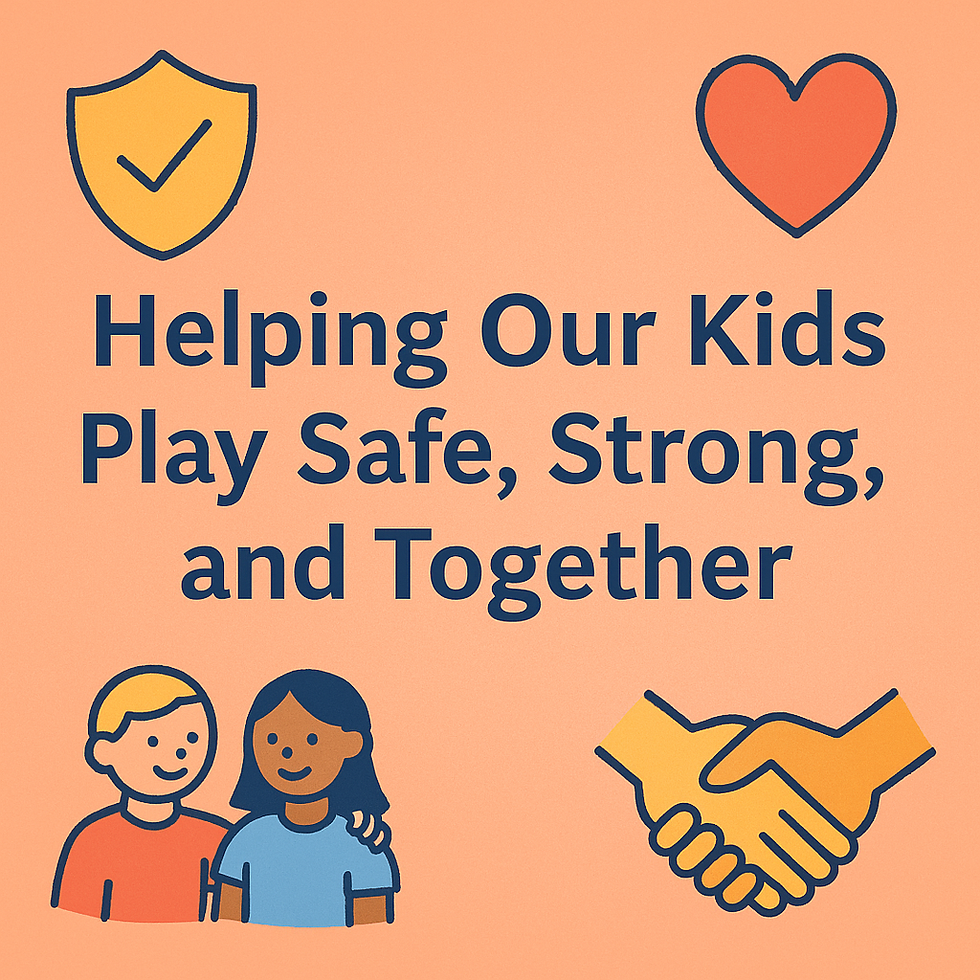From Rough Play to Safe Play: Building Group Agreements That Stick
- Greg Mullen

- Sep 4
- 4 min read
At some point in nearly every elementary classroom, a group of students will push the limits of safety during recess. Games escalate. Roughhousing turns from friendly to competitive to potentially harmful. And sometimes, even students who didn't choose to participate in any of it either get hurt or get swept into patterns that leave others hurt or excluded.
Many teachers quickly realize that traditional discipline responses, punishment, sit-outs, or reminders about empathy, don’t always solve the problem. That’s because what we’re seeing isn’t just individual misbehavior. Individually, each of these students are likely kind and self-aware humans who, like all humans, want to be liked and want to be good at things. The issue is a group dynamic fueled by excitement, peer approval, and the energy of play, which are all developmentally appropriate aspects of upper elementary students.
The good news: with the right strategies, the group itself can become the mechanism that reinforces safe and positive behavior. One thing teachers can do to help develop this dynamic is to discuss openly and candidly concerns about health and safety during play and co-create with students an anchor chart which can make strategies visible and concrete for students.

Anchor Chart Strategy 1
Ask Before You Play: “What’s the Safe Version of This Game?”
Children rarely stop to reflect before launching into a game. They act first and only think once a problem arises. By teaching students to pause and ask, “What’s the safe version of this game?” we build in a pre-play huddle where they negotiate rules that keep everyone included.
For example:
In tag, they might agree on “below-the-shoulders only.”
For ball games, they might set limits on distance or throwing speed.
For imaginative play, they might decide, “We pretend, but we don’t push.”
This isn’t about adults dictating rules; it’s about students taking ownership of safety. The ritual builds a habit of foresight, giving them agency while lowering the chance of harm.
Anchor Chart Strategy 2
Practice Like a Team: “We Rehearse Safety the Way Athletes Practice Drills”
We sometimes assume that once rules are set, children can immediately follow them. But group behavior, especially in energetic play, needs rehearsal just like any skill.
Athletes don’t just talk about plays; they practice them at half speed, repeat drills until they’re automatic, and stop to reset when someone misses. Students benefit from the same structure in playground games.
By practicing group agreements daily, reviewing expectations before recess, slowing down a game to reinforce boundaries, or stopping mid-play to reset, we show that safety isn’t a one-time reminder. It’s a muscle built through repetition.
Anchor Chart Strategy 3
Respect Builds Reputation: “Real Communities Keep Others Safe”
One of the biggest drivers of rough play is the desire for status. Students want to be seen as bold, strong, or funny in front of peers. If the only way to earn that recognition is by escalating risk, they’ll keep doing it.
The solution is to reframe what earns respect. When we highlight and celebrate students who pause a game to protect a peer, invite someone new to join, or remind others of agreements, we shift the group norm. Suddenly, being safe isn’t “boring”, it’s how you become a leader and part of a community you value.
Over time, this reframing helps boys in particular to internalize a healthier identity: my reputation grows when I keep others safe, not when I show off at someone else’s expense.
---
Why an Anchor Chart Matters
An anchor chart works because it’s visible, simple, and repeatable. Students can’t hold onto abstract reminders like “be empathetic” in the middle of a high-energy game. But they can latch onto three clear, student-friendly phrases:
1. Ask before you play.
2. Practice like a team.
3. Respect builds reputation.
When posted in the classroom and rehearsed daily, the chart becomes a shared script for how play is supposed to work. It gives adults and students alike a language for quick, consistent redirection.
How Families Can Reinforce This
Use the same language at home. Before backyard games, ask: “What’s the safe version of this?”
Celebrate safe leadership. When your child helps keep a game fair or safe, name it: “That was real leadership.”
Talk about status. Ask: “What makes someone a leader in your eyes? How can being safe and kind actually make you more respected?”
The Bigger Picture
Shaping safer play is less about eliminating energy and more about channeling it. By teaching students to pause, rehearse, and connect status with responsibility, we transform rough play into strong play; the kind that builds both joy and community.
In time, the anchor chart isn’t just about recess rules. It becomes a model for life: thinking ahead, practicing agreements, and using influence to protect others. That’s the foundation of empathy and leadership.
Even for kids who aren’t quite developmentally ready for empathetic reasoning about how their actions emotionally impact others, laying this groundwork gives them the foundation they need to develop and discuss these ideas when they are ready to do so.
Greg Mullen
Sep 3, 2025






